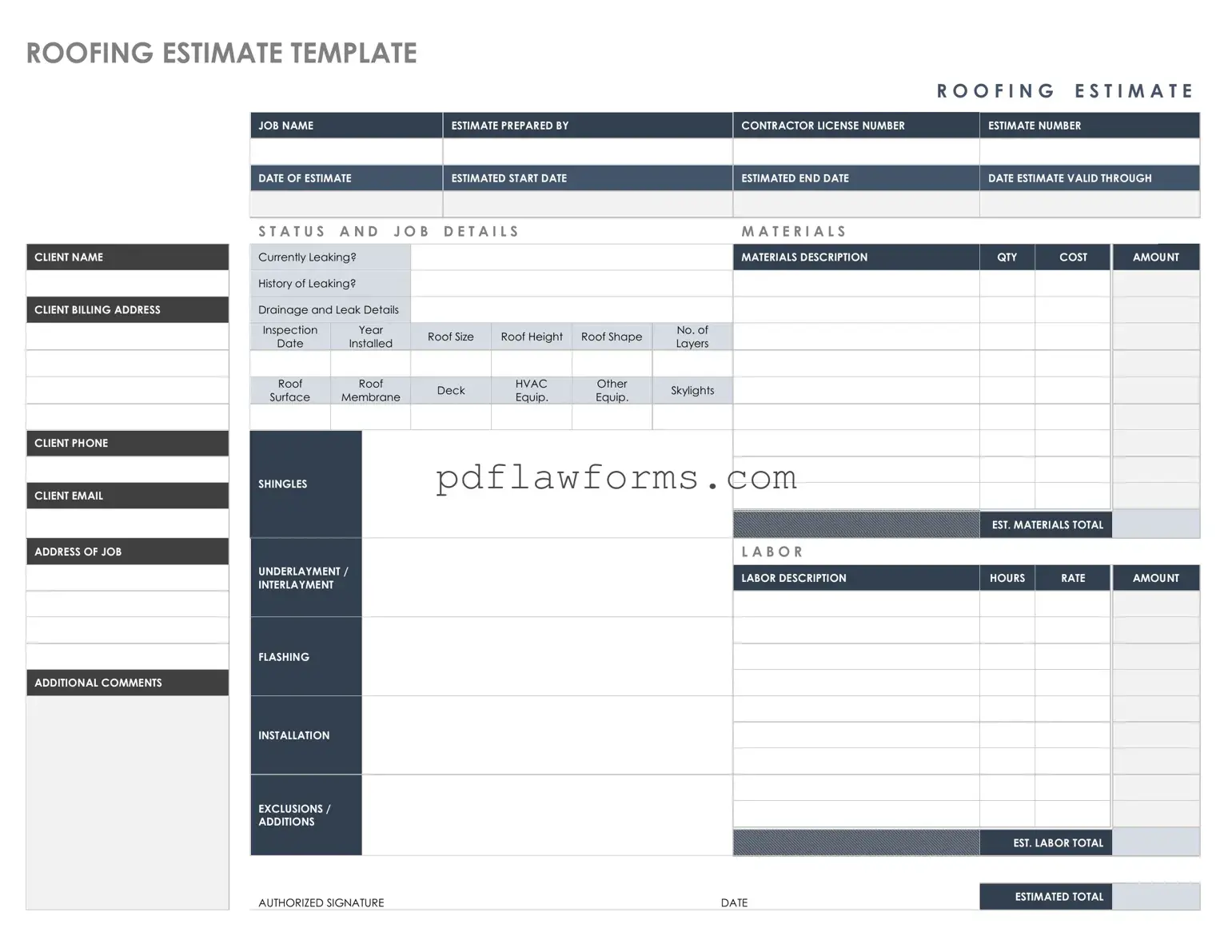When filling out a Roofing Estimate form, clarity and accuracy are essential. One common mistake is providing incomplete contact information. If the contractor cannot reach you, it can delay the process significantly. Ensure that your phone number and email address are correct and up to date.
Another frequent error is failing to specify the type of roofing material desired. Different materials have varying costs and durability. By not indicating a preference, you may receive estimates that do not align with your expectations.
People often underestimate the importance of detailing the size and slope of the roof. Providing vague measurements can lead to inaccurate estimates. Always measure your roof accurately and include those figures on the form.
Additionally, neglecting to mention any existing damage can be problematic. If there are issues such as leaks or structural damage, these should be disclosed. Contractors need this information to provide a comprehensive estimate.
Many individuals forget to ask about warranties and insurance coverage. It is crucial to clarify what warranties are offered on materials and labor. This information can significantly impact your decision-making process.
Another mistake is not considering the timeline for the project. Providing an unrealistic schedule may lead to misunderstandings. Be clear about when you expect the work to start and finish.
Some people fail to include specific details about additional features, such as gutters or skylights. These elements can affect the overall cost and should be clearly stated in the estimate form.
Overlooking the need for permits can also lead to complications. Some roofing projects require permits, and failing to mention this could cause delays in starting the work.
Lastly, individuals sometimes skip reading the fine print of the estimate form. Understanding the terms and conditions is vital. This step can prevent misunderstandings regarding costs and responsibilities later on.
